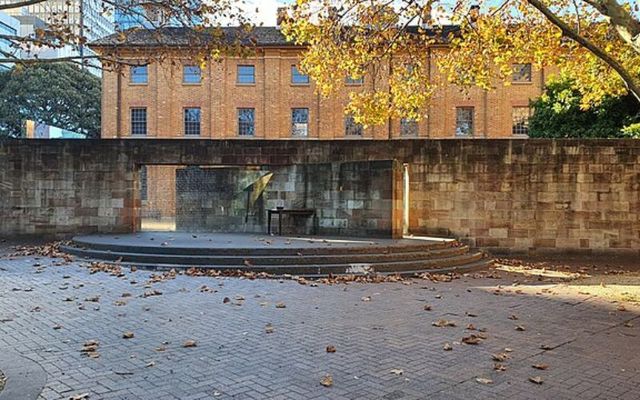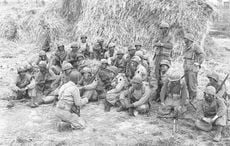In 2014, one man traveled over 10,000 miles to find more information about his great-grandmother who left Ireland in 1849 under an emigration plan, which sent thousands of young orphan girls from Irish workhouses to Australia during the Great Famine.
Frederick Smith and his wife Kathy journeyed from New South Wales, Australia to the steps of the Workhouse Memorial in Linenhall Street in Banbridge, County Down, after discovering his great-grandmother had left Ireland under the emigration scheme.
“It sends shivers down your spine to know that you are standing where she once was and to know that it’s real – it really happened,” said Kathy, about their visit to the memorial, which marks the very spot from which Fred’s great-grandmother left Ireland to make a new life.
The Dromore Leader reports that Fred had been researching his family tree for more than 40 years but knew little more than that his great-grandmother had arrived as an immigrant from Ireland.
At the Immigration Museum in Australia, he discovered that his great-grandmother, Mary Achison or possibly Hutchinson, arrived in Australia under the Earl Grey emigration plan which was designed to resolve the chronic shortage of female labor in Australia while at the same time relieving the overcrowding in Irish workhouses.
During this time, 4,175 girls sailed on ships to a new life in Australia.
Although estimates vary on how many girls left the Banbridge workshops, the website for the Australian Monument to the Great Irish Famine in Sydney lists the names of 16 girls from Banbridge, including Fred’s great-grandmother.
Mary is listed as having departed Ireland on October 13, 1849, to sail on the Diadem, arriving in Port Phillip, Australia, on January 10, 1850.
“The information I found came predominantly from a small booklet that I think was produced here in Australia called ‘Barefoot and Pregnant’” Fred told the Dromore Leader.
“Mary was 16 years old when she arrived on the Diadem in 1850.
“I also know she later married a John Smith in Portland, Victoria in 1851.
“At her wedding a Mary Burns was a witness together with a Charles Smith. Charles was probably John’s brother, but what’s interesting is that a Mary Burns from Banbridge also arrived on the Diadem in 1850, so presumably they were friends from the workhouse. Mary died in Orange, New South Wales, in 1911 just one month after her husband.”
* Originally published in August 2014. Updated in May 2023.




Comments